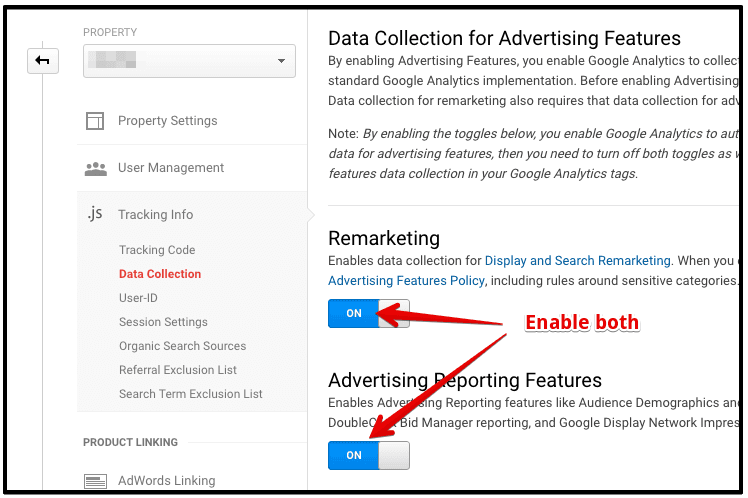Effective Methods for Remarketing In Google Analytics
Effective Methods for Remarketing In Google Analytics
Blog Article
Optimize Your ROI With Remarketing in Google Analytics
By taking advantage of the power of individual information and customizing advertisements to details audience sections, services can substantially magnify their conversion prices. The journey to taking full advantage of ROI with remarketing is a nuanced course paved with insights and chances that can improve the trajectory of your advertising ventures.
Understanding Remarketing in Google Analytics
Comprehending remarketing in Google Analytics is important for enhancing your digital advertising and marketing technique. Remarketing allows you to target individuals who have previously seen your web site or communicated with your app, providing them with tailored ads as they search various other websites or make use of various other apps within the Google Display Network. This technique assists keep your brand name top of mind and encourages customers to return to your site, ultimately raising the possibility of conversion.
By utilizing Google Analytics, you can track the performance of your remarketing campaigns, acquiring important understandings right into customer actions, involvement, and conversions. This information enables you to improve your targeting, bidding, and messaging techniques to improve the total efficiency of your campaigns.
In addition, understanding the various kinds of remarketing lists readily available in Google Analytics, such as common, dynamic, and comparable target markets, enables you to produce tailored and highly segmented projects customized to certain user segments. This level of granularity can dramatically improve the relevance and influence of your remarketing initiatives, ultimately optimizing your return on financial investment.
Establishing Remarketing Checklists
To effectively implement remarketing projects in Google Analytics, the initial action includes creating and configuring remarketing listings targeting particular individual sections based on their interactions with your site or app. By establishing remarketing lists, you can tailor your advertising initiatives to get to customers that have currently revealed passion in your solutions or products.
To begin, browse to the Admin section of your Google Analytics account and choose the Home where you desire to produce the remarketing list. Then, under the Home column, click on 'Audience Definitions' and choose 'Target markets.' Next, click the red 'New Audience' button and select 'Develop New' to define the criteria for your remarketing listing.

Crafting Reliable Remarketing Advertisements

When crafting your ads, focus on producing eye-catching headlines and compelling visuals that attract attention to potential consumers. Include strong calls-to-action that motivate customers to review your site and finish a wanted action. Make use of vibrant remarketing to reveal tailored ads including product and services that customers have actually formerly viewed on your site.
In addition, make certain that your ads are mobile-friendly considering that a significant portion of net website traffic comes from smart phones. Examination various advertisement variations to identify which layouts and messages drive the most effective results. By continuously refining and optimizing your remarketing ads based on performance data, you can maximize their performance and improve your return on investment.
Analyzing Remarketing Efficiency

With Google Analytics, marketing experts can track the performance of their remarketing campaigns in real-time, allowing them to identify patterns, patterns, and areas for renovation immediately. By evaluating the information, marketing experts can establish which advertisements are carrying out well, which target market segments are responding positively, and which networks are driving the most conversions. This degree of granularity allows marketing experts to make data-driven decisions to optimize their remarketing projects for better results.
Optimizing ROI With Remarketing
Evaluating remarketing data in Google Analytics makes it possible for marketers to identify opportunities for maximizing return on financial investment (ROI) through critical adjustments - What Is “Remarketing” In Google Analytics?. To optimize ROI with remarketing, it is vital to recognize the actions of your audience. By examining individual interactions, such as the pages they went to, the products they viewed, or the activities they tackled your website, you can tailor your remarketing projects better
Segmenting your target market based upon their habits enables you to navigate to this website produce individualized and targeted ads that are more probable to reverberate with them. By showing pertinent ads to particular segments of your target market, you can increase the possibilities of conversion and eventually enhance your ROI.
In addition, checking various advertisement creatives, messaging, and offers can aid identify what reverberates finest with your target market. A/B testing enables you to try out various components of your ads to identify what drives the greatest engagement and conversion prices.
Conclusion
To conclude, maximizing ROI with remarketing in Google Analytics requires a critical technique to analyzing individual behavior, segmenting audiences, developing tailored ads, and maximizing campaign efficiency. By leveraging data-driven insights and checking different strategies, services can boost their remarketing initiatives to drive higher interaction and conversion rates. This organized method ensures that sources are successfully designated in the direction of maximizing rois in remarketing projects.
Next, click on the red 'New Audience' button and choose 'Produce New' to define the criteria for your remarketing listing.
By continuously refining and optimizing your remarketing ads based on efficiency wikipedia reference data, you can maximize their performance and improve your return on investment.
By delving into these understandings, online marketers can gain a thorough understanding of just how their remarketing efforts are resonating with their target audience and driving conversions. To take full advantage of ROI with remarketing, it is vital to comprehend the behavior of your target market.In verdict, optimizing ROI with remarketing in Google Analytics calls for a calculated technique to assessing individual habits, segmenting target markets, creating customized ads, and maximizing project efficiency.
Report this page